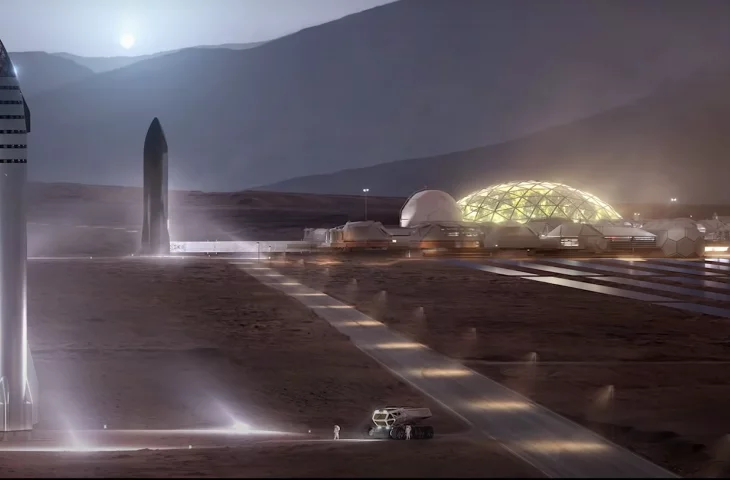A remarkable video shows what the first ten thousand days of a Martian city might look like. Based on existing technologies and those under development, it is a very plausible scenario for the coming decades.
Technologies at your fingertips
The fifteen-minute film, which premiered in early March, is based primarily on the results of research, experiments and competitions conducted by NASA and SpaceX, a company owned by Elon Musk. The compilation of recordings and simulations is complemented byvisuals from architectural competitions held by the US Space Agency. The participating teams of engineers and architects were looking for the best form for the buildings and cities to be built as bases for colonizers of the red planet. 3D printing technology is to be used primarily for their construction. Materials will partly come from Earth, partly from local crops, and Martian soil and rocks will become the main building blocks.
Martian base - one of the ten awarded projects
Photo: Hassel, Eckersley O'Callaghan / NASA
Architectural proposals are the result of the NASA 3D Printed Habitat Challenge, among others. AI SpaceFactory took first place in the 2018 competition. Marsha, a multi-planetary architectural and technology design agency, was hailed as the top winner in a long-running series of competitions involving a total of 60 teams. MARSHA's Habitat gives a glimpse of what the future of human life on Mars could look like, thanks to a 15-foot-tall prototype 3D printed during the final phase of the competition.
Non-fiction film
Visualization of the winning design
photo: AI SpaceFactory / NASA
Technologies developed by NASA are only part of what is seen in the film. Other tools come largely from SpaceX, the private company owned by visionary and billionaire Elon Musk. The controversial figure has been hoovering up people from NASA for years, and for a time SpaceX was financially dependent on the national agency, which contracts flights to the International Space Station. Elon Musk, however, has been remarkably consistent in his actions, and has done so on a scale that rivals the world's greatest powers. He now owns a third of all circumterrestrial satellites. Of the 80 rocket launches scheduled for the first half of 2021, 18 are SpaceX Falcon 9 rockets. Right behind it on the podium with 17 launches is China's Chang Zheng (Long March) rocket. And while we regularly hear about more accidents of Musk's rockets (three have already crashed this year) - with these tests, he may soon develop a product capable of transporting humans to Mars.
Crazy visionary
Martian base - one of the ten awarded projects
photo: Hassel, Eckersley O'Callaghan / NASA
There is more science than fiction in the material published on YouTube; its story, by the way, begins in the very near future. After all, SpaceX intends to send five Starship cargo ships to Mars in 2024. They are to start building a base in the Erebus Montes region, paving the way for humans to land on that planet and build Mars Base Alpha there, and then a self-sustaining colony. The video shows what Martian life will look like on a day-to-day basis, how the population of the red planet might change, when to expect the first extraterrestrial birth and when to expect a funeral. Elon Musk plans to put one million Earthlings on Mars by 2050. The billionaire wants to spend his entire fortune, estimated at nearly $200 billion, on colonizing Mars and transforming humanity into an interplanetary civilization.






























